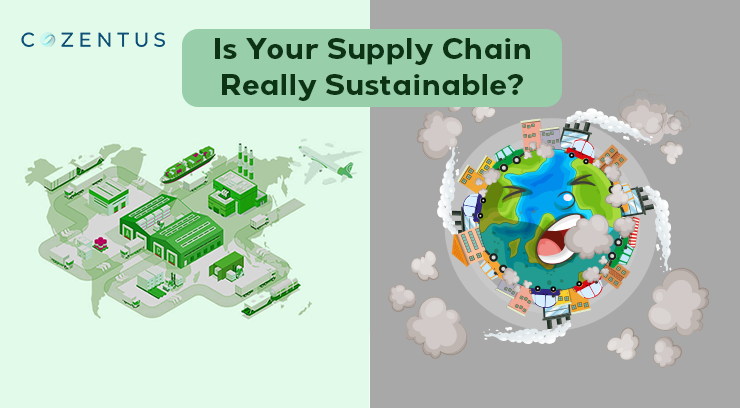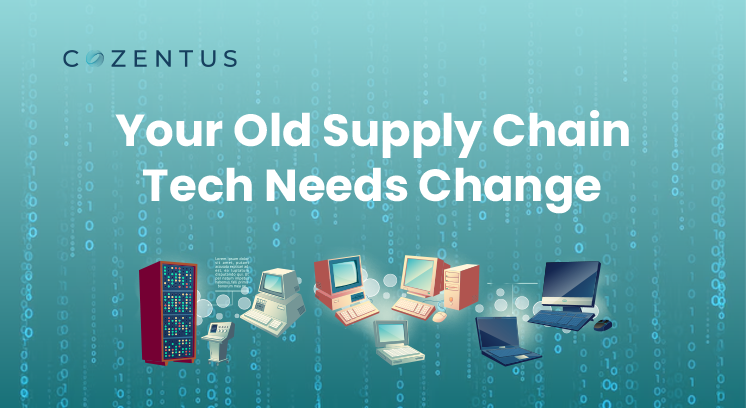Digitisation has permeated every element of business, including supply chains. Embedded sensors, GPS, and RFID, have assisted organisations in transforming their old conventional supply chain architecture (a mix of paper-based and IT-supported procedures) into more agile, adaptable, open, and collaborative digital ones.
Directors/ Editors Note:
Digital transformation in supply chain management allows for organisational flexibility, business process automation, and faster supply chain innovation. In order for businesses to maximise the benefits of digital supply chain models, businesses must incorporate them into their overall business strategy and organisational structure.
According to a Mckinsey poll of supply chain executives, 93 per cent intend to take actions to make their supply networks more robust, such as nearshoring and regionalising their supply chains.
There is no doubt that firms are eager to move away from the old supply chain management approach to increase agility, efficiency, and visibility. On that topic, let us go into the definition of digital supply chain visibility solutions and how it differs from conventional supply chain management.
Increasing Digital Resilience through Supply Chain 5.0
Two years of global disturbances have affected supply chain management. Labour shortages grow as more workers retire, prompting firms to rethink labour distribution. E-commerce has raised client expectations for faster delivery times. These changes need more immediate, precise, and granular supply networks. Digitisation helps organisations meet changing demands while being efficient.
Technology may help firms predict and minimise supply chain interruptions. Some industrial and logistics companies stay ahead through digitalising. However, forward-thinking firms realise that technology alone can only solve part of a complex issue and that future supply chains will succeed with human-robot cooperation.
4.0 Supply Chain
Many companies respond to supply chain visibility solutions and disruption with Supply Chain 4.0, which uses IoT, robotics, and advanced analytics. Integrating these technologies may improve a company's processes.
Supply Chain 4.0 is agile, granular, accurate, and fast. Supply Chain 4.0 promotes real-time supply chain visibility planning for flexible supply and demand responses. It distinguishes humans and robots, mostly on automation and less on decision-making.
Futurists predict a fifth industrial revolution that unites humans and robots. Would an integrated strategy help? Supply Chain 5.0 hypothesises.
5.0 Supply Chain
Supply Chain 5.0 addresses hyper-personalisation and hyper-customisation of client demands, which necessitates the correct combination of human innovation and computer efficiency. While robots do the grunt work, people may concentrate on creative pursuits and cognitive problem-solving.
Robots are often used in the industrial industry to perform repetitive jobs, speeding up the entire assembly procedure. In that regard, robots benefit firms attempting to maintain quality standards and a large production volume.
Putting in Place a Collaborative Supply Chain
Supply Chain 5.0's hybrid human-machine paradigm helps organisations survive change without losing competitiveness or profitability. Digitisation and human interaction are essential for supply chain resilience without replacing workers or changing customer or supplier processes.
Here are some guidelines to follow:
Automate data gathering and administration
Automating data collecting and administration may assist in increasing data accuracy. It is critical for firms that depend on data to make choices, such as pricing or inventory planning. Automating the tasks can enhance the sales process and make it more efficient and successful.
Improve process collaboratively
Many companies use a siloed integrated planning method. Make sure each department knows what the others are doing and why. Digitisation can provide real-time information to all departments, enabling them to cooperate on solutions.
Start small, and grow
Did you know you can start small and expand bigger with a 5.0 supply chain? That's correct. This form of the supply chain means to help firms develop and flourish. Here are a few things to bear in mind if you are considering establishing a 5.0 supply chain in your business:
- 5.0 supply chains are flexible and may be tailored to your demands.
- They are scalable, so you can start small and grow as your company develops.
- These are meant to be efficient and cost-effective.
What Steps Can I Take to Digitise My Supply Chain?
Digitalisation is key to building a connected, intelligent, efficient supply chain ecosystem. According to Gartner, by 2023, most big multinational firms will utilise artificial intelligence for supply chain, advanced analytics, and IoT in supply chain operations. Furthermore, collaborative robots are predicted to complement more than 30% of warehouse personnel.
The best practices listed below may assist firms in transitioning from a conventional supply chain to a more current digital supply chain:
Step 1: Examine the Present Supply Chain
Digitalisation should always begin with an evaluation of the current supply chain. This review considers the supply chain's strengths, weaknesses, opportunities, and risks. All present problems, hazards, and potential consequences must be recognised and investigated.
An evaluation aids in the early detection of future concerns, establishing preventative frameworks and supply chain visibility solutions, and mitigating possible damage. Instead of trying a Big Bang makeover that may generate confusion and reduce the odds of success, utilise a framework to define concrete targets for particular challenges.
Step 2: Create a Digital Strategy
To establish the objectives of the digital supply chain, businesses and their supply chain partners must interact and communicate. Understanding the projected advantages is critical to ensuring that the new digital system meets the demands of all stakeholders.
Furthermore, transitioning from a conventional supply chain to a contemporary, fully integrated digital supply chain may be a difficult task. Thus, a clear strategy and execution plan is essential.
Step 3: Perform Supplier Analysis
A vital step in establishing digital supply chain visibility solutions assessing providers' maturity and digital readiness. Checking their knowledge of possible dangers is an intelligent approach. Ensure that any questions or concerns regarding the advantages and expectations of digitisation are thoroughly addressed. You will not realise the promised advantages if your supplier is not ready for digitisation.
Step 4: Invest in Digital Capabilities
Invest in necessary digital capabilities once the objectives, risks, expectations, and possible rewards of digitalisation are clear. The required skills are critical to digitalisation success, whether software for digital logistics or supply chain management, RFID tags or GPS for real-time inventory monitoring, automated packaging or payment processing robots.
Step 5: Recruit Support
Human involvement is reduced in a digitised supply chain. While digitisation enhances stability, accuracy, quality, and predictability, human problem-solving and decision-making are still required. A well-informed workforce that has received enough training to ensure that it can manage new technologies successfully and optimally is needed for successful digitalisation.
Step 6: Analyse Performance for Continuous Improvement
After implementing digital systems and processes, the performance of the digitised supply chain must eval. Productivity, efficiency, ROI, and other indicators like lead times, inventory turns, and perfect order rates must all be tracked, evaluated, and compared over time.
This kind of analysis may assist in determining if the new system is working as intended and identify chances for digital-led optimisation and development.
Bottom Line
Cozentus is constantly developing solutions to contribute to the digitisation of supply networks by innovating to assist organisations in simplifying their supply chains. We are committed to helping our customers achieve supply chain efficiency via development.
Recent Post
Subscribe to our newsletter
Stay updated on latest trends and news in the supply chain and logistics industry







